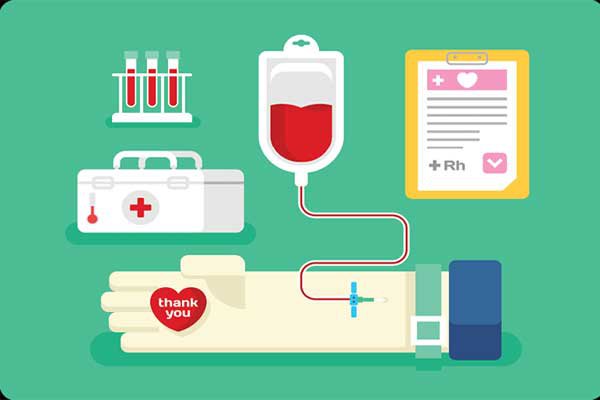
Teaching Your Kids the Importance of Blood Donation
There are countless stories told by people who have been helped by a blood donor they will never meet. Many of these stories include lives being saved by a one-time blood transfusion during childbirth, surgery, an accident or countless other reasons. Other stories include people who needed regular blood transfusions, including pediatric cancer patients who would not be alive today without this amazing gift of blood. According to NCH Healthcare System in Naples, Florida, “It is estimated that nine out of ten people who live to age 70 will require a blood transfusion” sometime in their lives.
According to the American Red Cross, just one pint of blood can save up to three lives. January is National Blood Donor month and the perfect time to start thinking about giving blood and/or plasma on a regular basis. Starting when my kids were young, my husband and I would take them to our local blood donation center so they could see their dad giving blood. Since then, they have been eager to hit the required blood donor age and are excited at the idea of helping to save lives. Why not take your child with you to see the blood donation process so you can get him used to the idea and take the mystery out of it?
There are many requirements that you must meet in order to be able to donate whole blood, platelets, plasma or double red cells. For example, you must be in good health, be at least 17 years of age (some states allow blood donation at age 16 with parental consent) and weigh at least 110 pounds. You will be asked a number of questions during an interview in a private room before being allowed to donate blood. There will be questions about your health history and about places you may have traveled. Your pulse, blood pressure and temperature will be taken, as well as a small blood sample from your finger to check your hemoglobin levels.
You are allowed to donate on the following schedule:
- You can donate whole blood every 56 days, so that your body has time to replenish its own supply.
- You can donate platelets every 7 days, up to 24 times per year.
- You are able to donate plasma every 28 days.
- You can only donate double red cells every 112 days.
A regular blood donation takes about 10 minutes during which time you can relax and chat, read or even sometimes watch television. When you’re done, you will be taken to a snack area for cookies and juice and rest. You are advised against doing anything too strenuous for the rest of the day. Your donation of just one pint of blood can help to save one or more lives!
Even though your child is probably too young to donate blood, one way to get your child involved is by hosting a blood drive at your work, church, or child’s school or daycare. Simply contact your local blood center and find out how you can get the Bloodmobile to come to your location and then publicize it beforehand to get as many donors there as possible.
To learn more, visit www.redcrossblood.org/learn-about-blood
Kerrie McLoughlin blogs at TheKerrieShow.com and is married to a man who donates his O negative blood and platelets on a regular basis.
Views: 1




